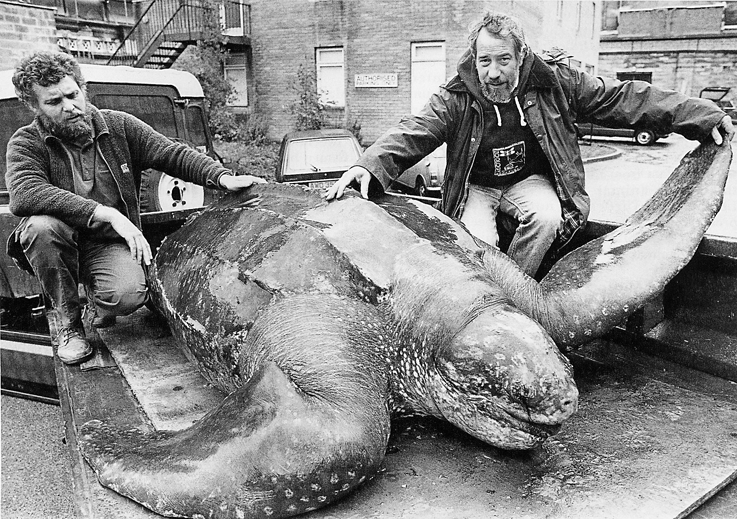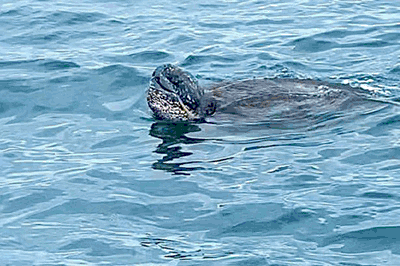Leatherback turtle
The leatherback turtle is the largest of all the marine turtles. When sighted at sea it is often thought to be an overturned boat due to the 'keels' running down its back. As its name implies, it's carapace (shell) is made up of extremely thick skin. This is the only turtle that can cope with the cold seas around the UK having the ability to raise its core temerature to compensate.
The leatherback in the picture above was found entangled in rope (drowned) at Harlech, Gwynedd in 1988. At 2.91 metres long it is the largest recorded specimen of this species. The remains are preserved at The National Museum of Cardiff.
Another dead leatherback turtle of note was found stranded at Pembrey, Carmarthenshire in September 1997. It was found with flipper tags on both rear flippers. A search of the tags found it had been tagged on a beach in French Guiana, South America. Subsequent satellite tagging of a few leatherbacks in Irish waters have seen them return in this direction. It would appear this species travel vast distances to the UK to coincide with our jellyfish blooms July to September.
At Sea
If sighted at sea the head may be the obvious feature tilted upright surfacing for air with a small area of carapace visible behind.
Unfortunately, the major cause of death for leatherbacks around our coasts is entanglement in pot or creel ropes.
It is possible that they deliberately entangle themselves with their front flippers in rope believing they are reeling in the tendrils of a jellyfish. Careful handling of live entaglements can be rewarded with a successful release, do not attempt to tow the animal to shore.





